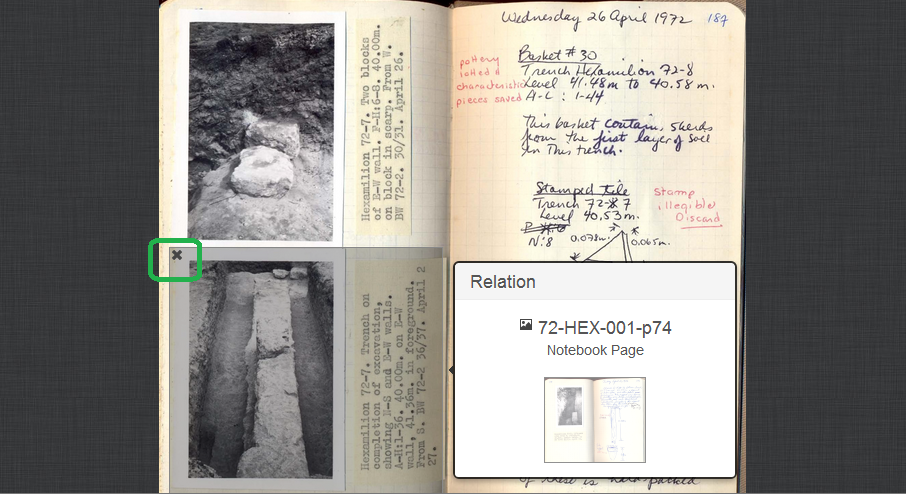Annotating
Understanding Annotations
Annotating a resource is an integral aspect of ARCS. It allows you to define relationships between resources, and make the sometimes messy handwriting of researchers searchable.
An annotation is a special class of resource metadata that marks a boxed region of a resource image. They are simply a way to relate different resources in ARCS. You can also link your new annotation to any other resource which according to you can be associated with that particular annotation.
Creating Annotations
Annotations can be created in three different ways in the viewer. You can create a hotspot by boxing over a given area of a resource. This will create a hotspot. You will then be prompted to define the annotation as a relation with another resource, a transcription, or a link to an outside source. as described below:
Relations
Relations are a simple link to another resource in ARCS. You can select a resource and open it by double-clicking on it. It will open in a new window. You can select a region of the resource which you wish to annotate by just dragging the cursor over it and mark it as a boxed region as follows:
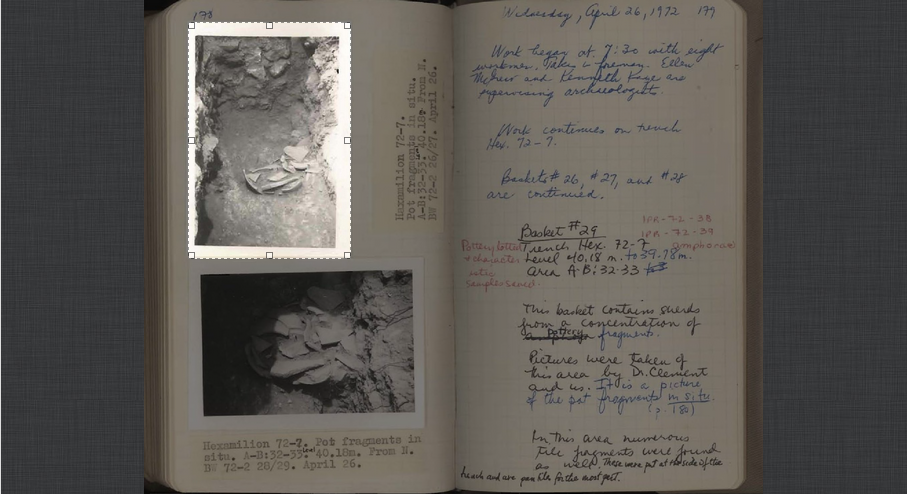
As soon as you box over, the annotation dialogue is revealed as follows:
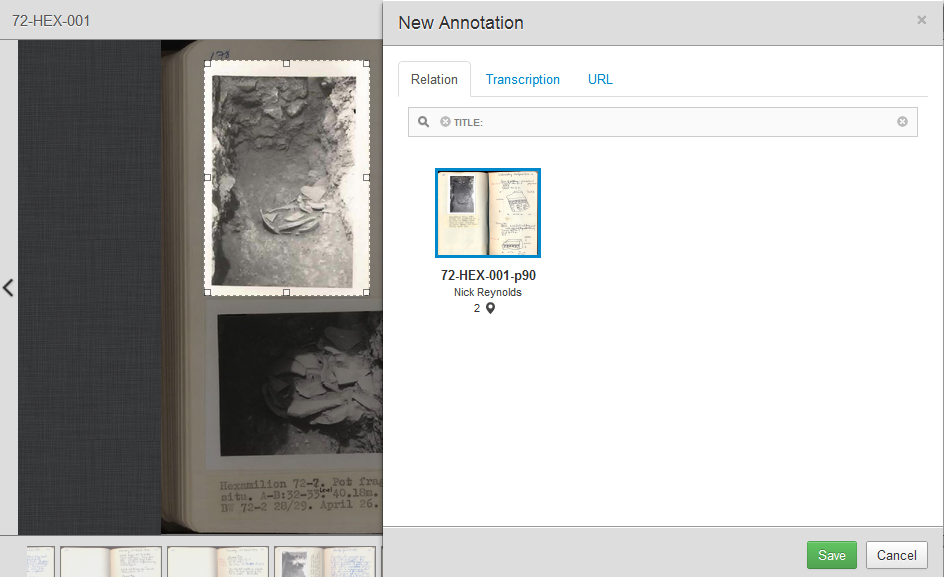
You can select the resource which has the same image from the resources which
you can see in the annotation dialogue and click on Save to relate the two
resources.
When you hover over an annotation, you can view its type and preview in a popover as shown below. This content is the relation resource’s title, type and thumbnail.
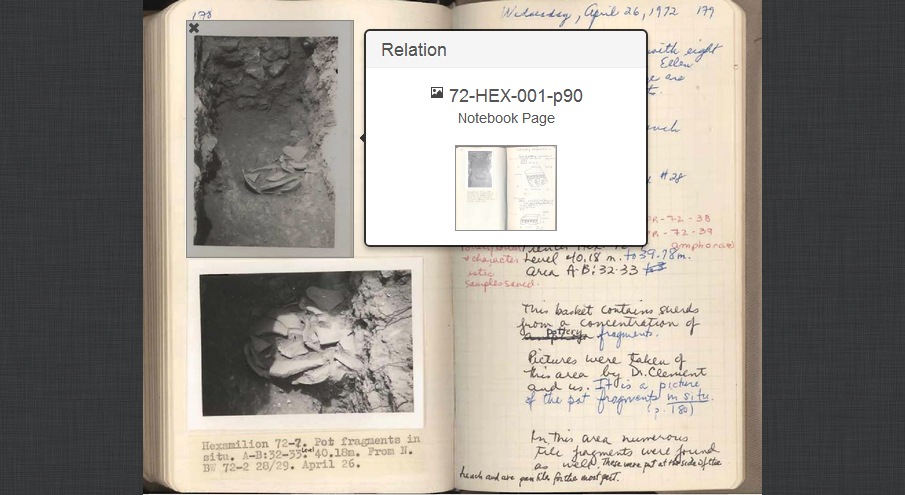
Transcriptions
Often it is very difficult to read and correctly decipher the handwritten text
in a resource. ARCS allows you to select the region of the text of the resource
and re-write the corresponding text in the transcription tab as shown below and
then click on Save:

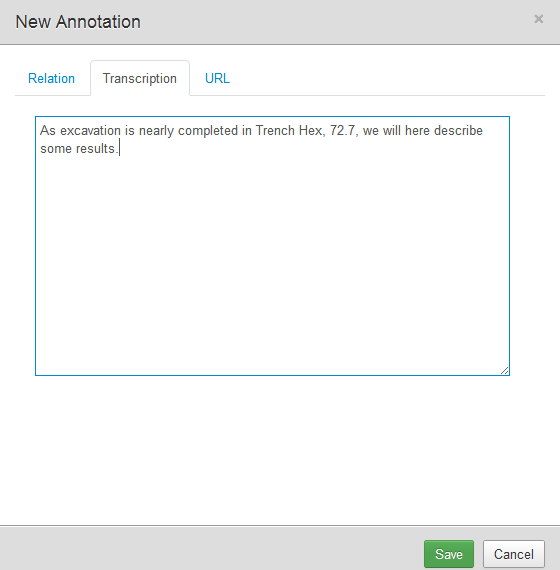
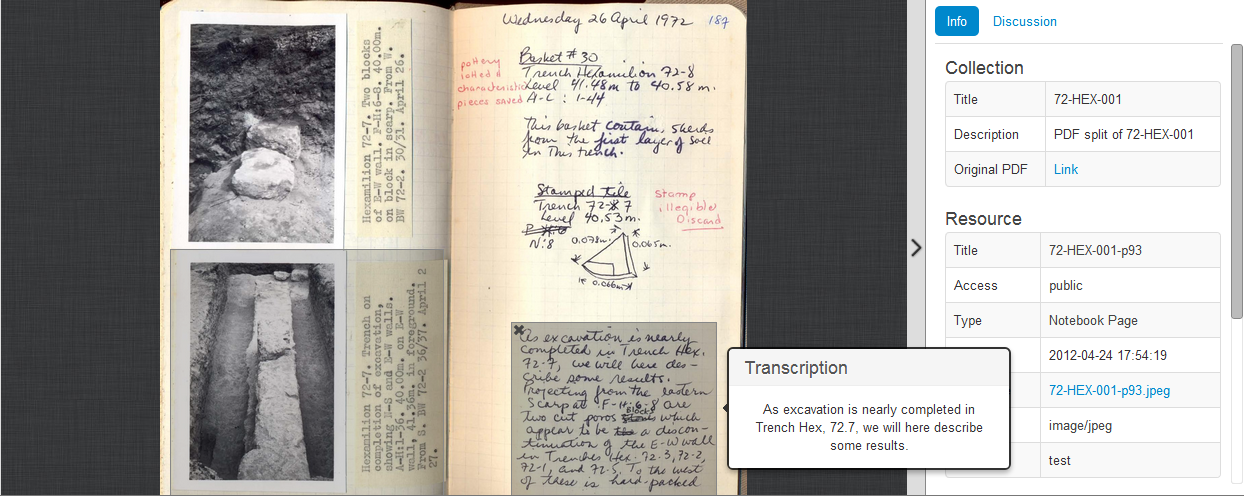
This would help you to search for the text in the search bar and find the corresponding resource which has the text.
URLs
They are external links which are useful in creating a link between the
selected region in the resource and the content in another application. You can
select the region in the resource and add a URL to connect it to the content on
the application and click on Save:

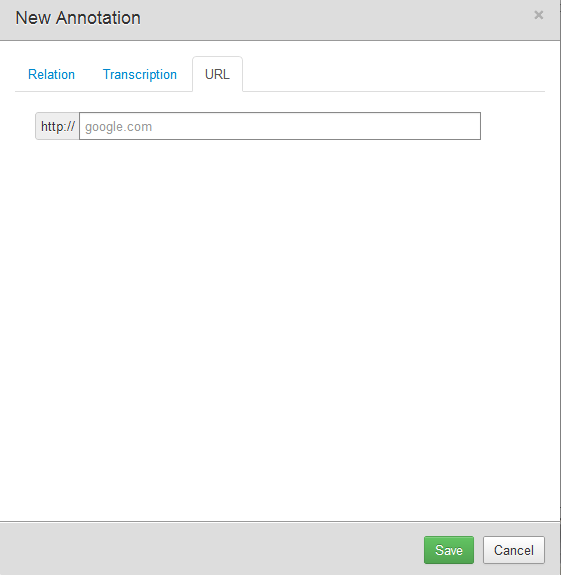
A summary of all the annotations corresponding to a resource can be seen in the sidebar.

Editing/Deleting Annotations
Annotations can be edited or deleted only by Senior Researchers and Administrators to avoid any erratic changes in the data of the resources. If you are a researcher, you can delete only your own annotations or flag another researcher’s annotation by selecting it and flagging it with a valid. You can do this by clicking the × that appears in the left corner when hovering over an annotation in your resource, and then confirming the deletion. If you don't see an × while hovering on an annotation, you're not allowed to delete it.
